Many Young Patients With Cancer Unaware of Fertility Preservation Options
It is known that the fertility of adolescent and young adult patients with cancer can be put at risk by treatments, but little research has been conducted looking at awareness, counseling and actions in this area.
It is known that the fertility of adolescent and young adult patients with cancer can be put at risk by treatments, but little research has been conducted looking at awareness, counseling and actions in this area.
An analysis of 459 adolescent and young adult patients showed that fertility preservation counseling and action varied among patients based on sex, medical factors, insurance and child-rearing status. These findings, the authors wrote, demonstrate a need for both increased awareness of fertility preservation options and insurance coverage.
The authors cited several areas of concern. Patients without insurance and patients raising children younger than 18 years were more likely not to receive counseling regarding fertility preservation from providers than those who had no children. Further, among males, patients receiving treatment that posed little or no fertility risk were also less likely to discuss fertility preservation.
Male patients aged 18 to 20 years were more likely to report being told about, discussing and making arrangements for fertility preservation.
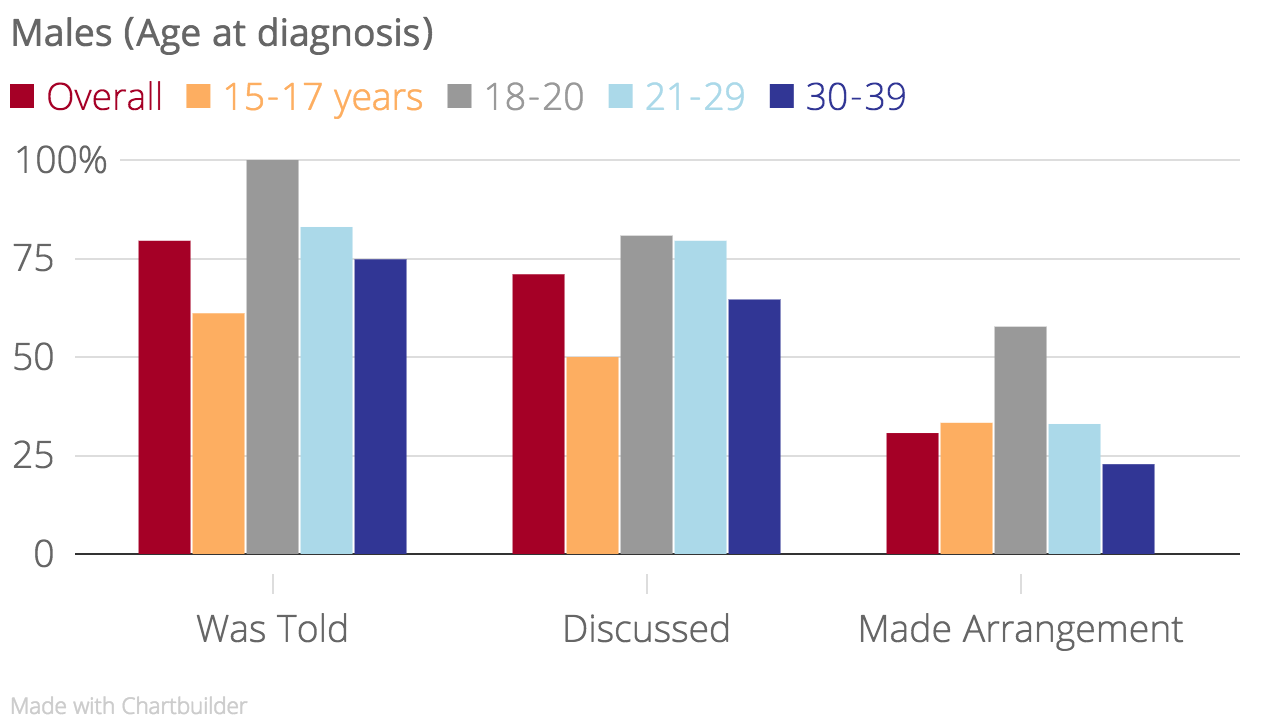
Male patients aged 18 to 20 years were more likely to report being told about, discussing and making arrangements for fertility preservation.
Female patients aged 21 to 29 years were more likely to report being told about and discussing fertility preservation.

Female patients aged 21 to 29 years were more likely to report being told about and discussing fertility preservation.
Black men were far less likely to report being told about, discussing and making arrangements for fertility preservation.
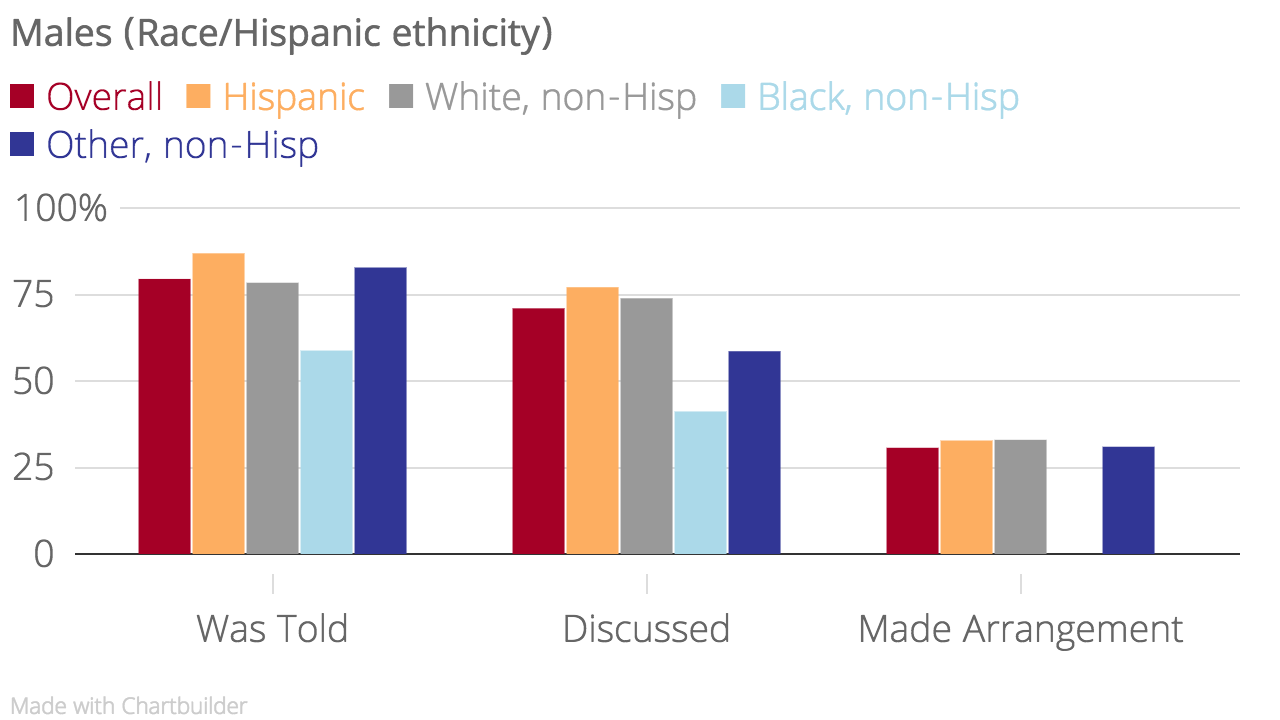
Black men were far less likely to report being told about, discussing and making arrangements for fertility preservation.
Black and Hispanic women were less likely to report being told about and discussing fertility preservation.
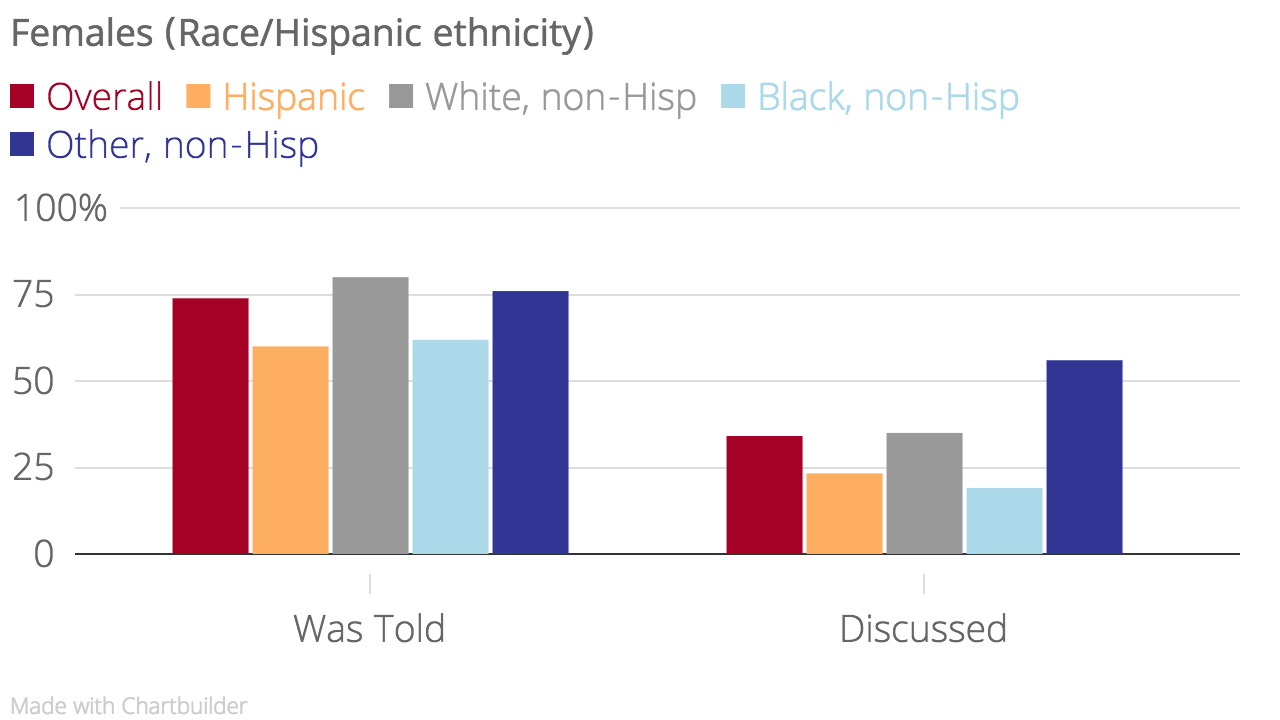
Black and Hispanic women were less likely to report being told about and discussing fertility preservation.
Male patients not raising children were more likely to report making arrangements for fertility preservation.
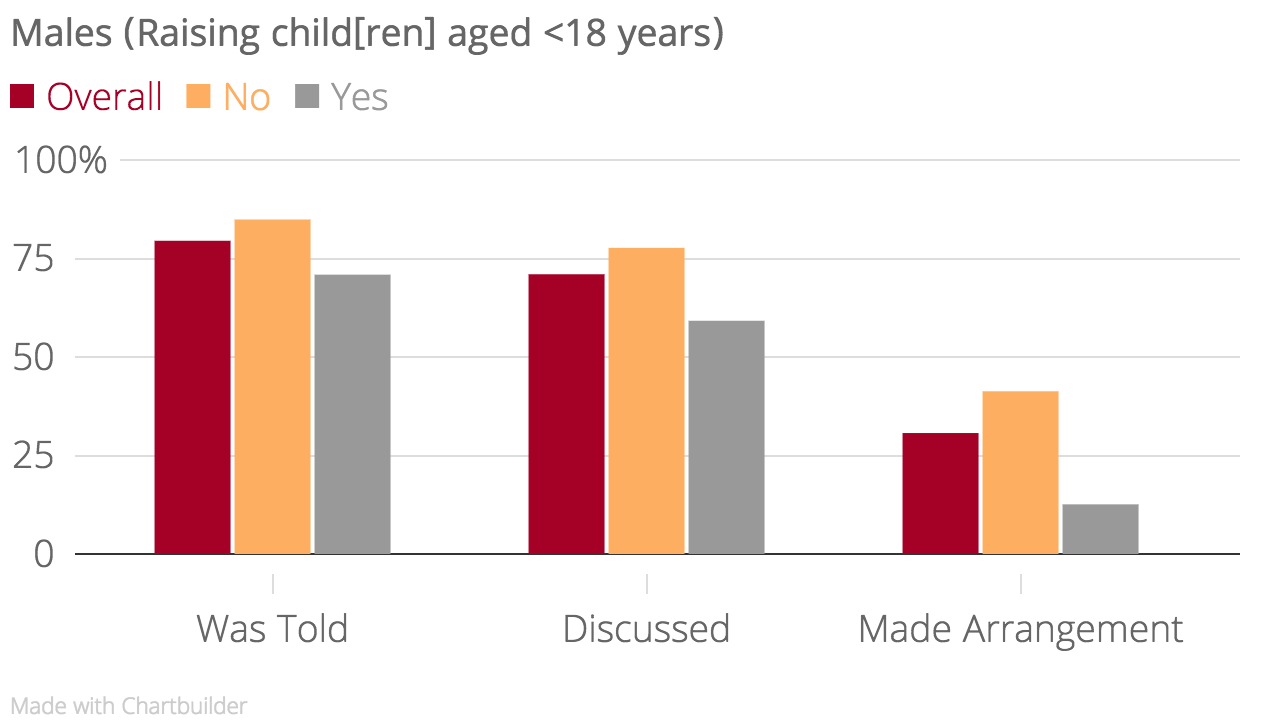
Male patients not raising children were more likely to report making arrangements for fertility preservation.
Women not raising children were more likely to report discussing fertility preservation.
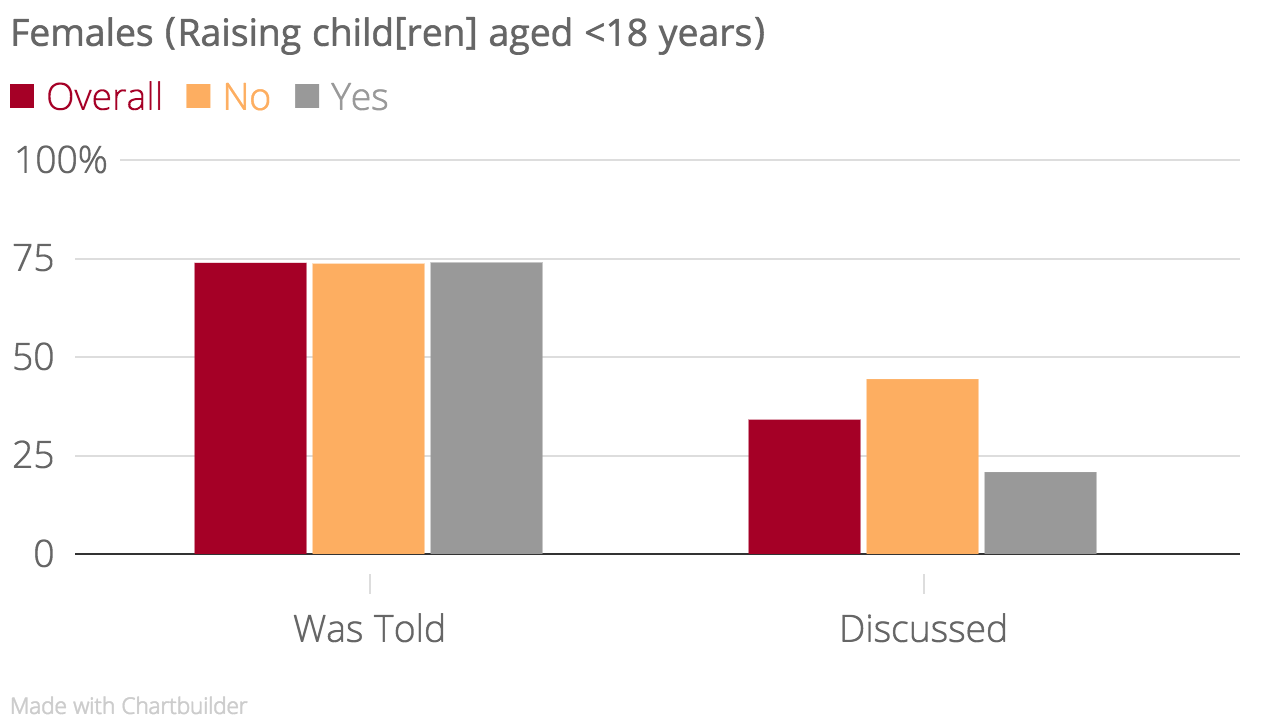
Women not raising children were more likely to report discussing fertility preservation.
Male patients with private/HMO/IPA insurance were more likely to report discussing and making arrangements for fertility preservation.
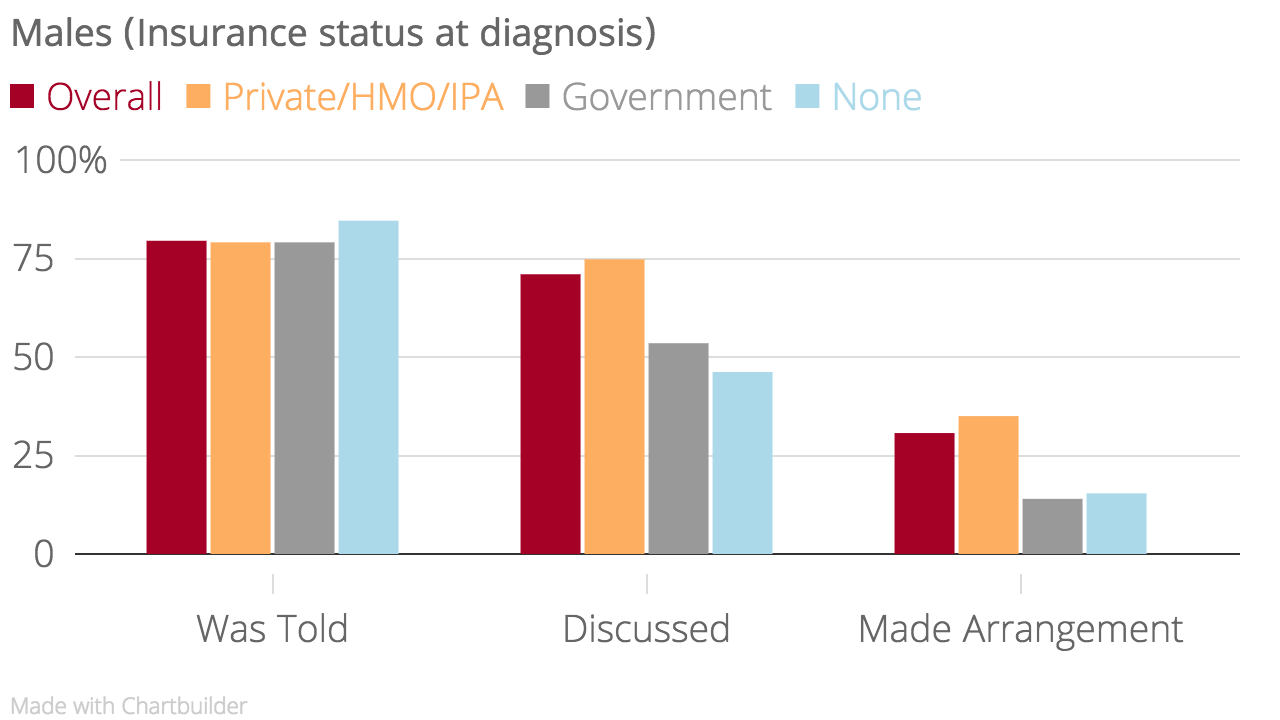
Male patients with private/HMO/IPA insurance were more likely to report discussing and making arrangements for fertility preservation.
Female patients with government insurance were far less likely to report discussing fertility preservation.
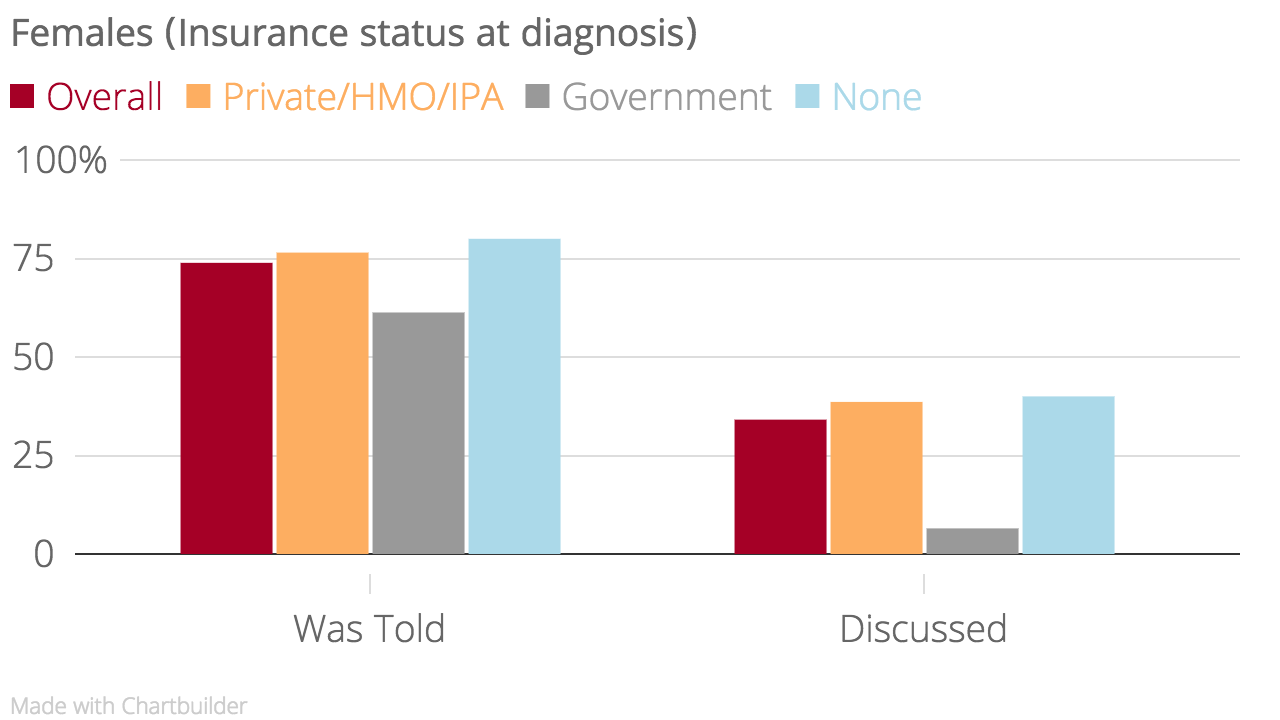
Female patients with government insurance were far less likely to report discussing fertility preservation.
When it came to actually taking action, males without a college degree, males raising children younger than 18 years, and those lacking private insurance were all more likely to not make fertility preservation arrangements. Too few females made arrangements for such an analysis to be conducted.Eligible patients were part of one of seven geographically defined U.S. regions in the National Cancer Institute’s Surveillance, Epidemiology and End Results (SEER) program.
Patients were 15 to 39 years old when diagnosed with germ cell tumor, non-Hodgkin lymphoma, Hodgkin lymphoma, acute lymphocytic leukemia or sarcoma. Patients were diagnosed between July 1, 2007, and October 31, 2008.
Overall, 1,309 patients were recruited. Of those, 459 patients completed a baseline questionnaire six to 14 months after their diagnosis and a follow-up survey after that (15 to 35 months after diagnosis). Medical record data were abstracted for all 459 patients.
The authors highlighted differences in the discussion of and arrangements for fertility preservation between the sexes.
Females were less than half as likely as their male counterparts to report that fertility preservation options were discussed.
Further, “[m]ost striking, nearly one-third of males reported making arrangements for fertility preservation, a rate that was four to five times higher than that for females,” the authors wrote.
Differences in access and health-related reasons for patients not making arrangements for fertility preservation clarify several needs, the authors wrote.
There remains a need for lower costs, improved insurance coverage and “partnerships between cancer health care providers and fertility experts” to increase awareness.
Chart data adapted from: Shnorhavorian M, Harlan LC, Wilder Smith A, et al. Fertility preservation knowledge, counseling, and actions among adolescent and young adult patients with cancer: a population-based study [published online July 27, 2015].Cancer.
Cannabis Talks During Cancer, Cardiometabolic Comorbidities and Current Research
March 4th 2024In addition to a breakthrough therapy designation for a lung cancer drug, this week we’ll be talking a lot about additional side effects and health conditions that may come with a cancer diagnosis, and how to manage them.
Listen